Blog
“God, how we all grow!” The family of Júlia Szendrey at Hársfa Street
Emese Gyimesi presents the everyday life of Julia Szendrey’s stepfamily, who was the most famous literary widow of the 19th century.
In the chapel of the parish church in the Lipótváros (Leopoldstadt) neighborhood of Pest, a twenty-one-year-old woman and a thirty-year-old man got married on July 21, 1850. With this, one of the most frequently mentioned nineteenth-century marriages was contracted; Júlia Szendrey — the widow of the most popular poet of the period, Sándor Petőfi — wedded a historian, Árpád Horvát, only about a year after the death of her first husband. The general public could not get over the shock of the marriage; nor could historiography. In July 1849, when the War of Independence was subdued, Petőfi vanished into thin air, and his cult grew ever greater. His young widow was left on her own with her one-and-a-half-year-old child. Because of the harassment from the authorities of the Austro-Hungarian Monarchy, the insecurity of her financial background, and the backbiting she suffered in many quarters, she could not take on the role of the “widow of the nation” that the public attributed to the wives of the martyrs of the War of Independence. Her contemporaries did not understand her terrifying situation, so they looked down on her decision to remarry. The oft-repeated comment that “with Petőfi, his Juliska also died” as well as the iconic “discarded widow’s veil” obscured the figure of Júlia Szendrey, and allowed little other than the condemnation or disparagement of the new marriage.
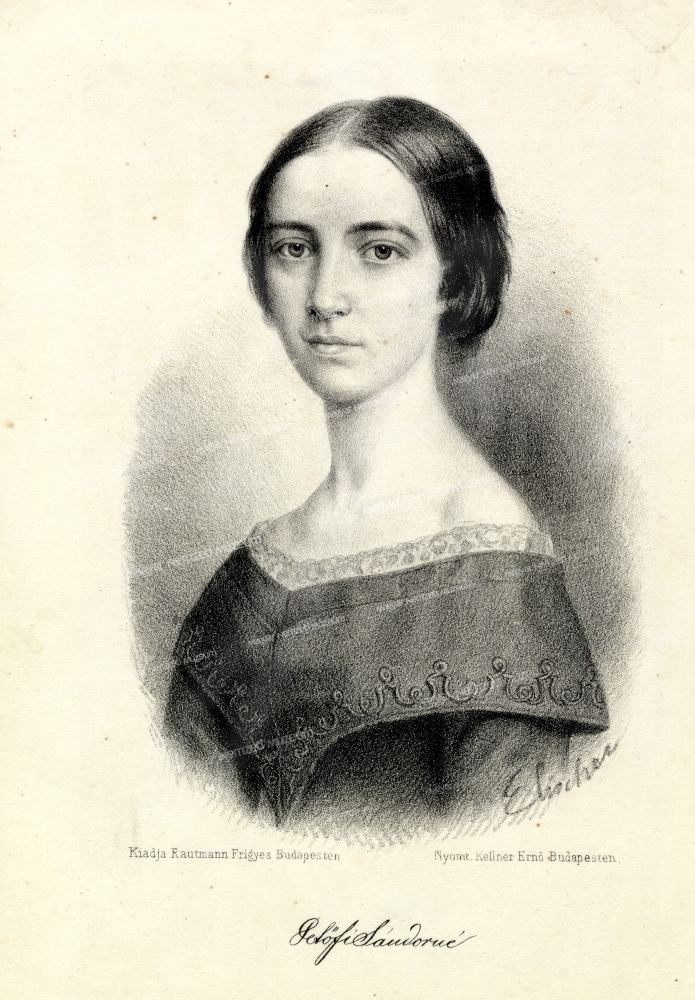

Júlia Szendrey and Árpád Horvát
This deprecation contributed to the lack of scholarly attention to the life and everyday activities of Júlia Szendrey in the 1850s and 1860s, the period after the disappearance of Petőfi. Due to the abundance of sources, this period of her life is at least as exciting as that connected to Petőfi from a sociohistorical point of view. This is not only because she became an author who wrote and recurrently published poems, short stories, and translations, but also because her family became one of the most learned intellectual families of the period. Júlia Szendrey brought her one-and-a-half-year-old child, Zoltán Petőfi, to her new marriage; he later had four half-siblings, two boys and two girls.
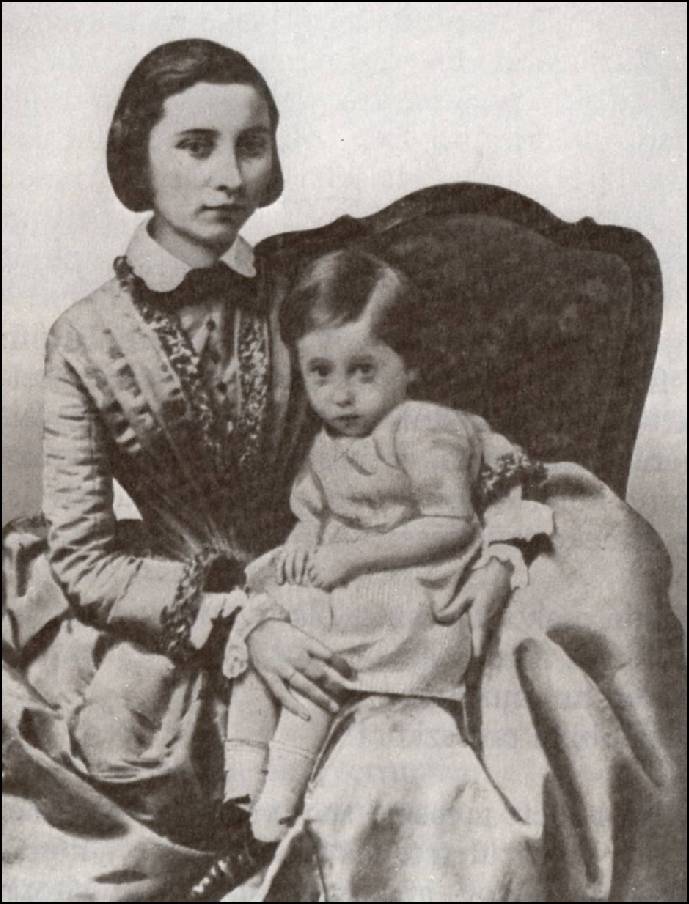
Júlia Szendrey and Zoltán Petőfi
From Lipótváros to Terézváros
They spent the first three years of their marriage in the Lipótváros neighborhood, but in 1853 Júlia’s father, Ignác Szendrey, bought them an apartment at the corner of Hársfa and Király Streets. The house stood at the intersection of the densely built-up streets (the population of Király Street was exceptionally high) and the entirely undeveloped, grass-covered areas, at the border of what became Inner and Outer Terézváros (Theresienstadt). This was an entirely new experience to Júlia Szendrey, whose previous residences were close to the former city center.
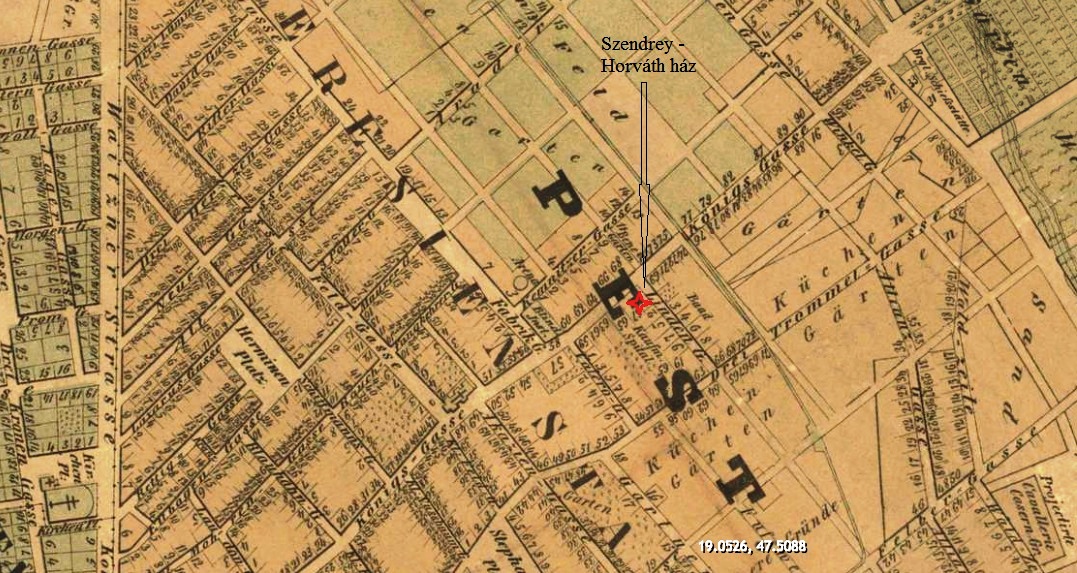
Detail of a German city map of the inner city in Pest-Buda, 1854. The house of the Szendrey-Horváth family stood at the corner of Königsgasse-Lindengasse, in the red marked place.
On the one hand, Hársfa Street’s provincial milieu may have brought novelty, while on the other, she found the constantly bustling Király Street, which until the construction of Andrássy Street was the busiest street in Terézváros, referred to as the “liver of Pest” connecting the city center and the Városliget (City Park). When they moved there, the family consisted of four members: Júlia Szendrey, Árpád Horvát, their first child, Attila Horvát, born in 1851, and Zoltán Petőfi, from Júlia’s first marriage. For fourteen years, until the separation of the two parents in 1867, Hársfa Street was the site of the everyday life of the family. Their younger son, Árpád, was born here in 1855, as well as Viola, who died in infancy in 1857, and their second daughter Ilona in 1859.

Family photo from 1857: on the right of Julia Szendrey with Attila Horváth, on his left with Árpád and Zoltán Petőfi
The family home at Hársfa Street
The children were raised in an exceptionally rich intellectual milieu. From 1857, their mother had an independent literary career and published frequently; their father was a university professor and historian, and the son of another historian, István Horvát; and their aunt, Mária Szendrey, was married to the literary historian and critic Pál Gyulai. The company of Mária Szendrey and her children created a learned environment in which writing was an amusing game and source of joy for even the youngest family members.
An exceptionally high number of sources survived from them. These are not only exciting because they originate from this special family, but also because of the rarity for a historian finding not merely an autobiography that recalls childhood, but contemporary writings by actual children.
The fixtures and the immediate environment of the apartment at Hársfa Street can also be known in detail. Júlia Szendrey and Árpád Horvát’s eldest child, Attila Horvát, made a detailed drawing of their home in 1869. He made two ground plans: one marks the exact location of the fixtures in the different rooms, while the other represents the different plants in the garden.
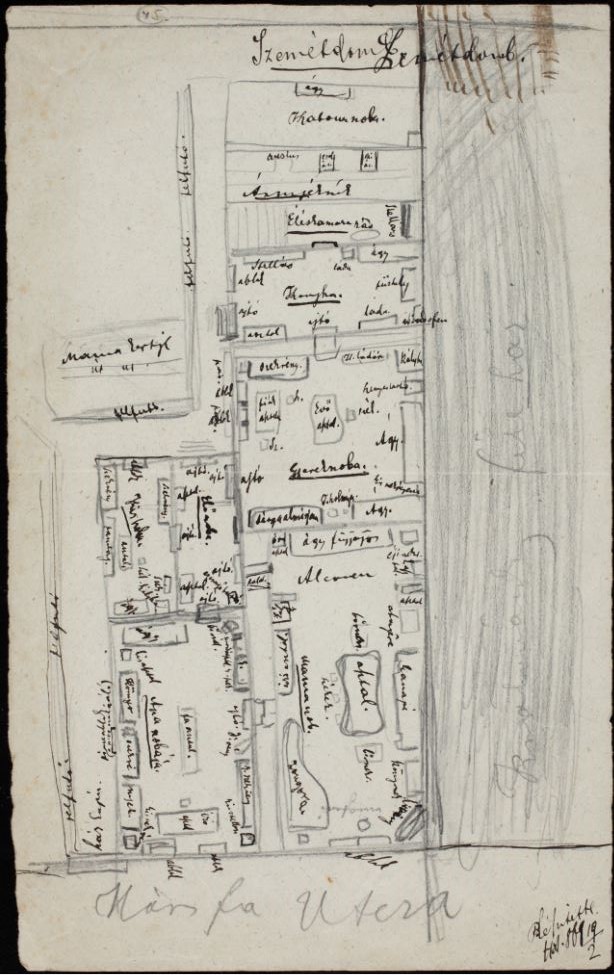
Attila Horvát’s drawing about their family home in the Hársfa street
According to the ground plans the house consisted of the following rooms: “soldier’s room, closet, storage room, children’s room, mother’s room, father’s room, entrance hall, small room, corridor.” The practice of having a soldier’s room originated in the countryside, where quartering was recurrent; as the military frequently moved around the country, they were not quartered in garrisons but in the private houses of townspeople and peasants. However, there is no surviving data indicating that any soldiers ever stayed at the house. Based on letters exchanged between the children, it was probably used by the handmaids.
The curiosity of the drawings lies in the fact that judging by the name of the rooms (“mother’s room, father’s room”, etc.) they were done from the children’s perspective. The signature (“done by A. H. 869 19/2”) in one of the corners of the ground plan displaying the fixtures reveals that it was done by the older son, Attila Horvát, in 1869 when he was eighteen. By then the home at Hársfa Street was a thing of the past, as the family had split up two years earlier. Júlia Szendrey moved away from her husband to Zerge (now Horánszky) Street with her daughter Ilona, while Árpád Horvát rented out a flat at Országút (now Károly Boulevard) with their sons. Júlia Szendrey was suffering from cervical cancer, and she died after a long battle with the illness on September 9, 1868.
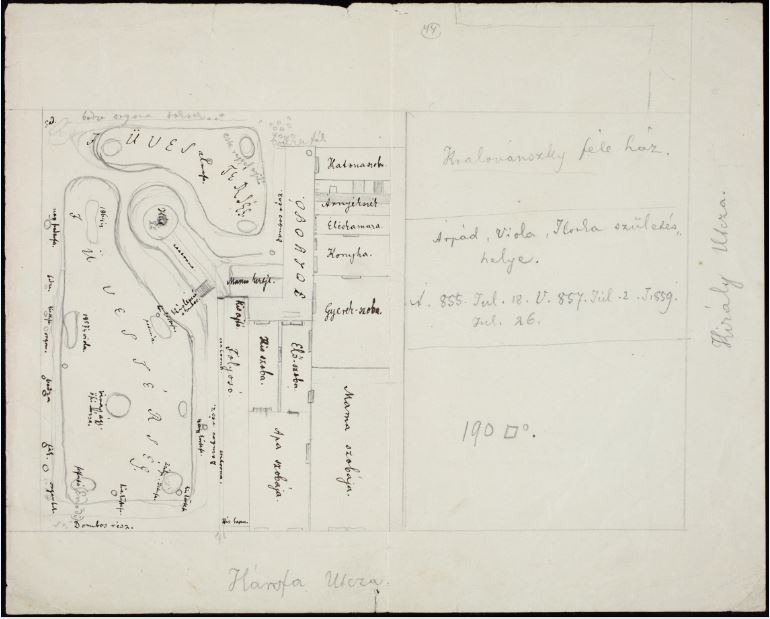
Attila Horvát’s drawing about the surroundings of house in the Hársfa street
As we can see, the ground plan showing the fixtures was done in the period following the family’s separation and the death of his mother. The other ground plan that represents “mother’s garden” and the broader environment of the house was also prepared by Attila Horvát, who additionally registered the birth dates of his siblings: “Birth place of Árpád, Viola, Ilonka, Á. 18 Jul. 855., V. 2 Jul. 857., I. 26 Jul. 859.” In the background of the drawings that register the fixtures of the former family home in great detail, a strong emotional motivation, a desire to maintain the family’s memories, can be assumed on the part of the teenage boy.
Analysis of the fixtures not only allows an understanding of the inter-family relations, but also the male and female roles, which differed markedly from social conventions, the function of the different spaces of the flat, and the relationship between the private space of the home and the public social life. In the house of Júlia Szendrey and Árpád Horvát, less emphasis was put on representation than in average bourgeois apartments, where usually the salon, or drawing room, got special attention; by contrast, at the Szendrey-Horvát family’s home space for private, intellectual work was important. It is striking that the “gentleman’s room”, usually referred to as the “man’s room” (the head of household’s study, and often also the library room) in this case was not only a privilege of the husband.

Men’s room – ideas for the upper middle class. Wohl Janka: The Home, 1882.
The desk with its associated chairs, bookcase and sofa — the necessary fixtures of a “man’s room”— were present in both Árpád Horvát and Júlia Szendrey’s rooms. This is notable because in most cases, despite the fact that wives were charged with creating a tasteful décor for the home, they did not have their own rooms. The presence of the necessary fixtures for artwork in Júlia Szendrey’s room shows that the female member of the family was also engaged in serious intellectual work. This not only shows the intellect of the room’s resident, whose daily needs included regular reading and writing, but also that — uncommonly for the period — the woman had her own room at her disposal. The décor of this room did not markedly differ from that of the man; the elements of the study were evident in both rooms.
One of the characteristics of Júlia Szendrey’s room was that it fulfilled numerous functions. The “alcove,” which provided the intimate space with a curtained bed, was located at the innermost part of the room; this point of the room constituted a private space for its resident. The most important element of the bourgeois apartment, a piano, along with a rose bowl and a sofa, was at the opposite side of the room in front of the window, on “display.” As a counterpoint to the private sphere, this room part overlooking the street was the space of representation, to which its objects also testify. The desk was around the middle forming a liminal space between the intimate, inner and the public, open parts of the room. In this way the functions of the bedroom, the study and the salon united in the room of Júlia Szendrey, though within the room itself, the borders between spaces with different functions stood out relatively well.
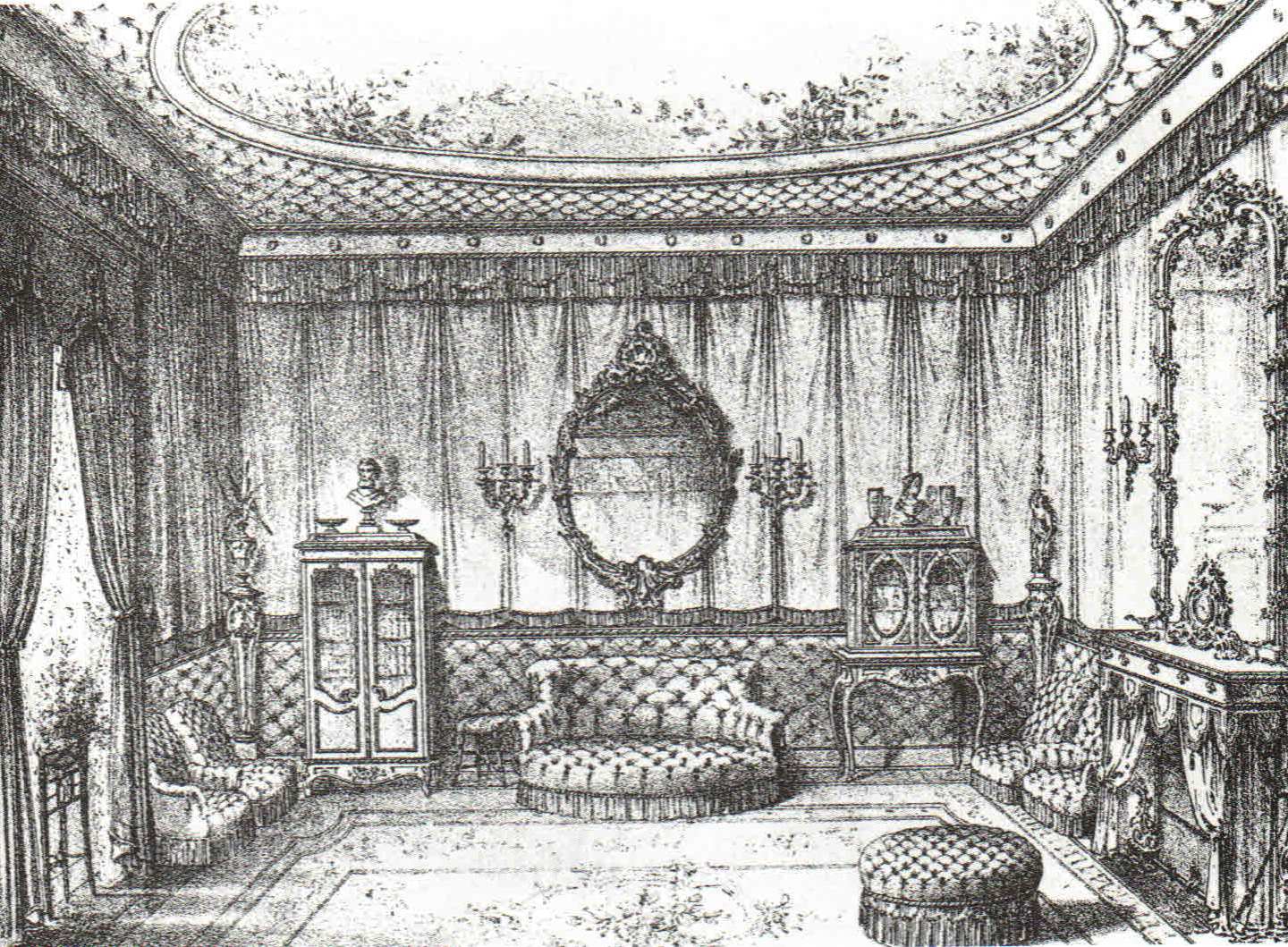
Ladies room – ideas for the upper middle class. Wohl Janka: The Home, 1882
Comparing the rooms of the wife and the husband, it is striking that the former is more spacious, and aside from the desk that represented the importance of intellectual work, it also had a number of fixtures that made it fit for representation and receiving guests (e.g. piano, sofa, étagère). However, these objects were lacking from the latter; it was furnished almost exclusively for the purposes of secluded work. Consequently, the room of Júlia Szendrey was rather close in function to a salon, while that of Árpád Horvát was closer to a study: nevertheless, it was not exclusive in either case. The design of the rooms tells of the emancipated situation of the family, though the marked separation of the rooms and living spaces could also be understood as a sign of a cold relationship between the couple.
Árpád Horvát’s room opened from the entrance hall where there was a table and an umbrella stand. The children’s room could also be approached from the entrance hall. In the middle of that there was a dining table, and separate from that, a “boy’s table.” Next to the stove there was a laundry bay, and then two beds, while next to the door was a yellow book case. The existence of a children’s room was not common at all, and in the inventories of apartments from the coming decades there are only sporadic references to separate children’s rooms, even if the number of rooms would have allowed it. Even at the beginning of the next century it was not typical to have children’s rooms in bourgeois apartments, although by then more and more references were made to their necessity.
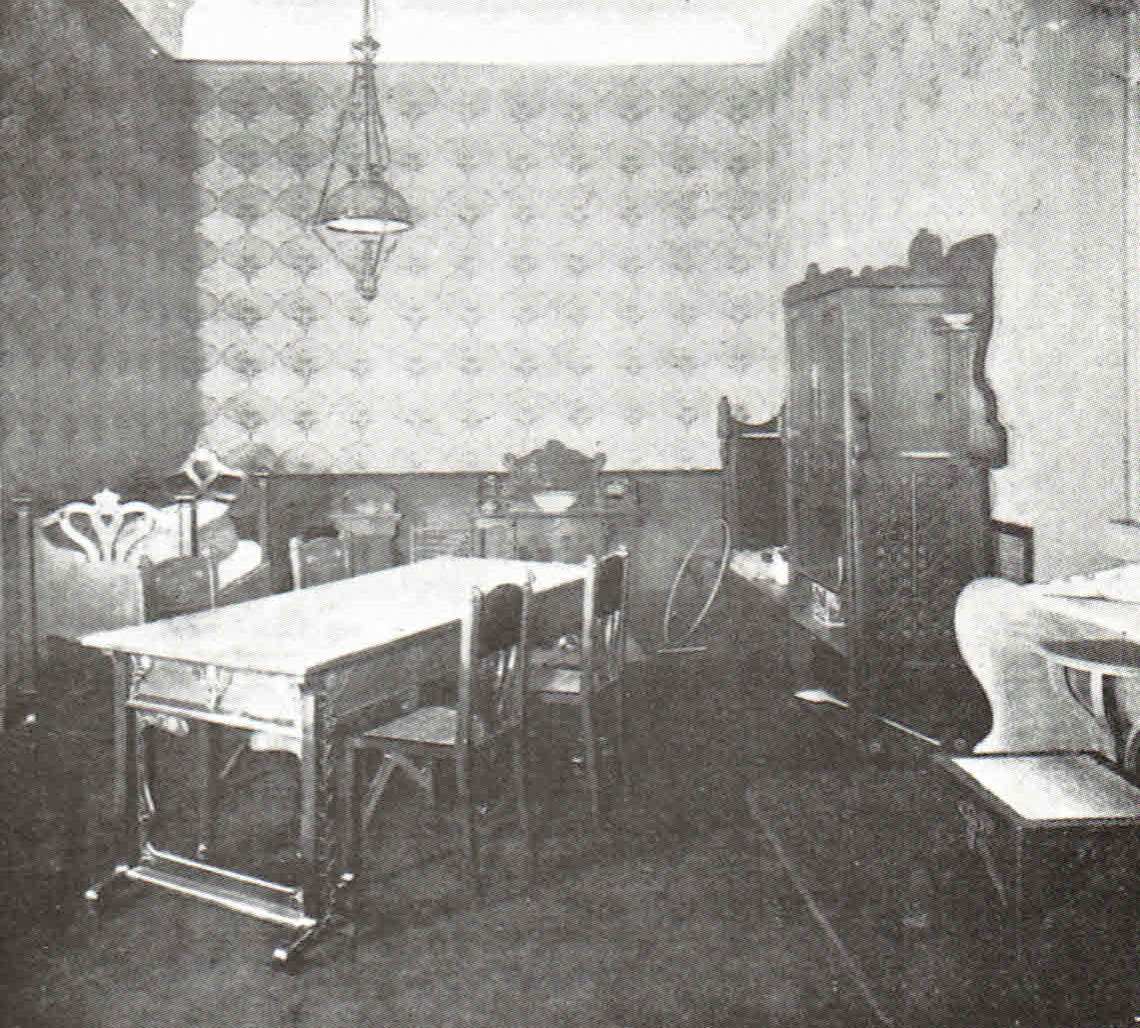
Multifunctional children’s room, Erik Pauly’s design in the Crafts magazine, 1900.
Source: Civil housing culture in the turn of the century. Ed. Péter Hanák, 1992.

Family Photo from 1862: Júlia Szendrey with Attila, Árpád and Ilona
Childhood and brotherly love
One of the most special family documents is a playful “journal” that came into being thanks to the fourteen-year-old Attila Horvát and ten-year-old Árpád Horvát between December 1865 and January 1866. The manuscript journal imitated contemporary journals. The children gave the first issue at Christmas as a surprise, and the second on December 29 as a birthday present to their mother. This especially creative and kind gift is not the only example of the special role that gift-giving had to the family; the children presented every family member with special greeting poems on their birth and name days, and they recurrently spoke in their letters of the gifts they received. As Attila Horvát wrote to Zoltán Petőfi in 1863:
“my birthday was nicely and cheerfully spent. From dad, I received a big national flag that was hanging from his window during the revolution; with your birthday also approaching, let me congratulate you, and wish you luck in your career in business.”
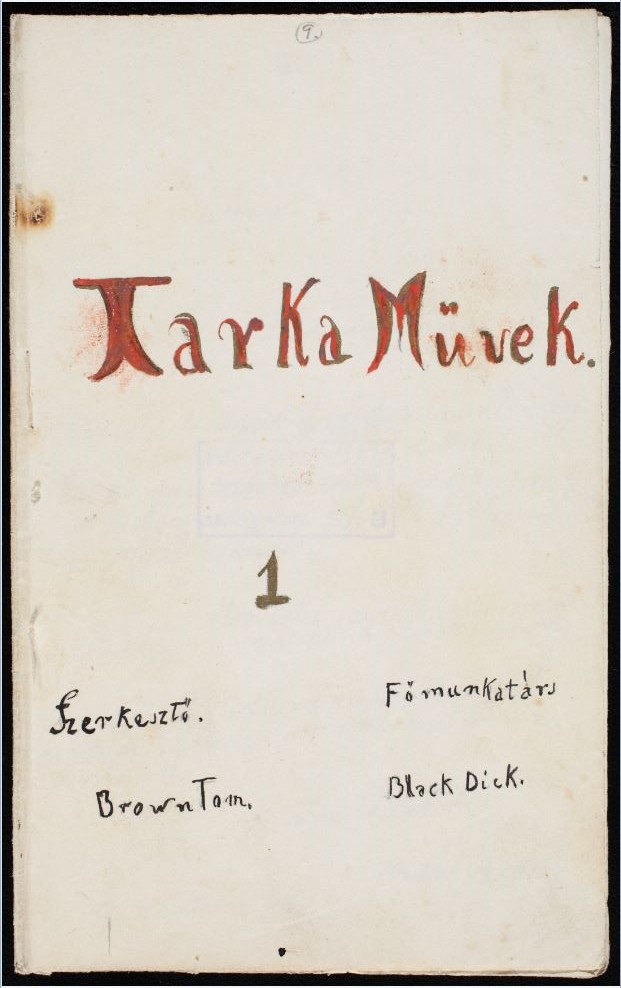
The Tarka Works entitled gaming magazine
The Horvát boys wrote numerous letters to their half-brother between 1863 and 1868, as by the 1860s Zoltán Petőfi did not stay with his mother and stepfather’s family in Pest but with his foster father, István Petőfi, in Csákó. Although raising the child with a relative may seem strange today, in the nineteenth century and earlier it was rather typical. As a five-and-a-half-year-old child, Sándor Petőfi did not live in the home of his own parents anymore, but with their relative, Mihály Hrúz, in Kecskemét. The upbringing of Zoltán Petőfi therefore not only took place in the mosaic family that came into being with the marriage of Júlia Szendrey and Árpád Horvát, but also with people who were once close to his father having important roles. This is connected to the efforts of Júlia Szendrey to emphasize Zoltán’s connections to the heritage of his father. In April 1850, when, as a desperate young mother, she was considering suicide, she wrote a goodbye letter addressed to the sixteen-month-old Zoltán, which he would have received at the age of ten. It contains the following lines:
“when you read this letter, by then you have neither father nor mother. The only thing you inherit from them is your name: but never forget about that; this name: Petőfi! Your father made it great and glorious, at least you shall keep that free from filth and flaw.”
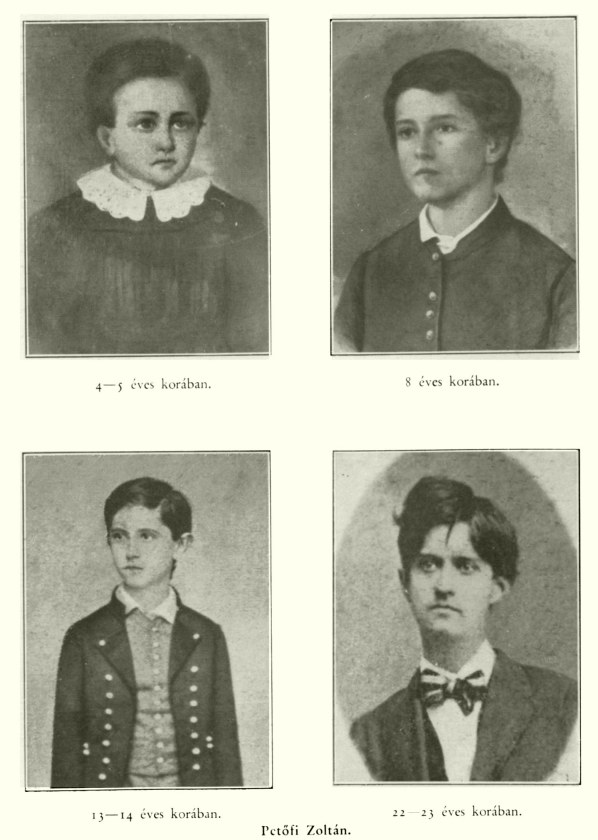
The portraits of Zoltán Petőfi in the book of Júlia Szendrey. The estimated ages are unreliable: eg. he did not reach his 22nd birthday.
So Júlia Szendrey raised, and later had Zoltán raised, according to these principles, keeping in mind the heritage of his father. The fact that she chose István Petőfi, the brother of her first husband, to be the little boy’s guardian rather than her new husband, Árpád Horvát, can also be understood in this context. There was a need to appoint a guardian because in 1858, the Hungarian Academy of Sciences chose Petőfi’s collected poems as the winner of its 1000 florin grand prize, which was to be held in trust until Zoltán was older.
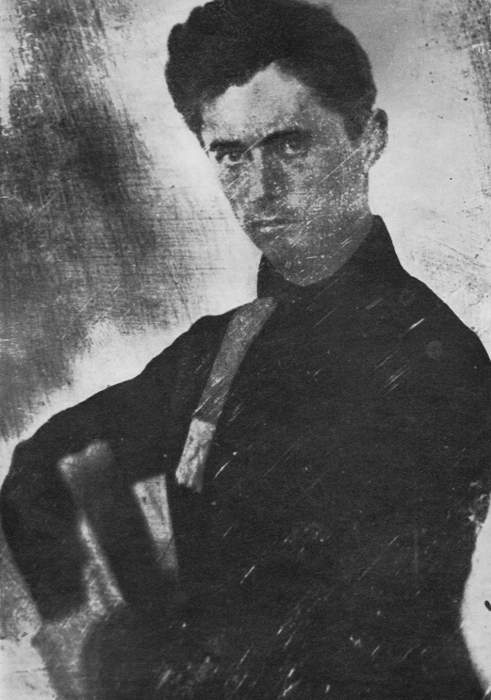
Sándor Petőfi’s only known “photo”.
Zoltán’s continuing problems at school were part of the reason that he moved to be with István Petőfi; such educational difficulties were also part of his father’s life. Zoltán had spent a number of summer vacations with his uncle before, so the fundamentally different environment from what he was used to in Pest was not totally alien to him. The family ties remained strong even after the move, and Zoltán kept in touch with his half-siblings as well as his mother through regular letter exchange. He enquired on August 23, 1863: “How is dear father, isn’t he angry? Your well-being depends on his state of mind. I kiss and greet him.” The latter sentence draws attention to the possibility that the oldest son was aware of the growing tension between Júlia Szendrey and Árpád Horvát in the 1860s.

Zoltán Petőfi at the beginning of the 1860s
On numerous occasions, the letters refer to the physical distance between the half-siblings, often mentioning how long ago it was that they last met. The letters were also meant to lessen the growing emotional distance between the family members. Of all the siblings, it was Attila Horvát who was most enthusiastic about corresponding in writing. On December 11, 1866, after a three-month gap, he wrote to Zoltán Petőfi: “we haven’t written letters to each other for a long time, I would love if we renewed corresponding with each other.” He expressed the desire to communicate more frequently a number of times. Apart from that, he also tried to write about topics that Zoltán Petőfi may be more involved in, and which may have been interesting to him. He frequently referred to events in the town, professors and his fellow students, whom Zoltán also knew, and who remembered him.
In their correspondence, one sees that the ties with fellow students in Pest, as well as within the circle of the family, remain present. This is testified by Attila Horvát not only speaking of his own well-being, but also recurrently informing his half-brother of other family members, as well as reminding him of birthdays, such as that of his younger sister: “Iluska is well, nine years old today, God, how we all grow!” The latter note is a good example of Attila Horvát viewing his family as a community. Clearly, his family constituted a fundamental part of his identity, and he wrote fondly about them all.
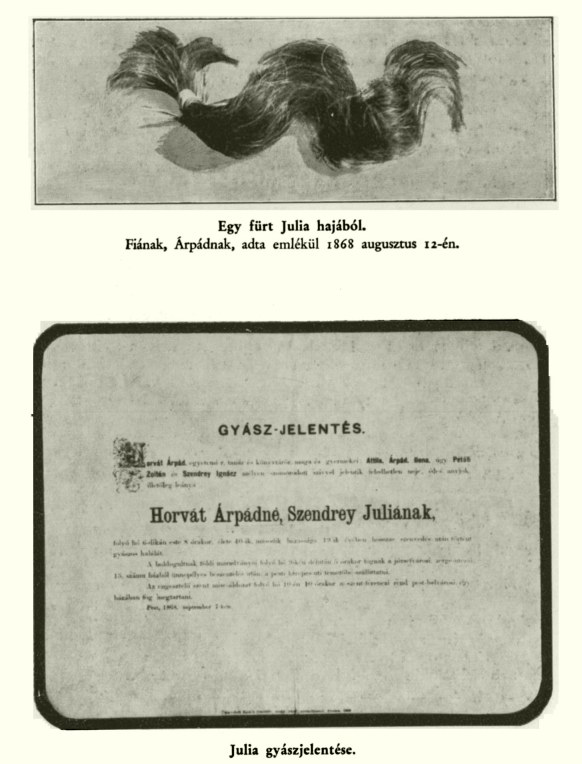

Julia Szendrey’s obituary, her smallest son’s haircut and her original tomb
Follow us on Facebook to get notified of new posts!


